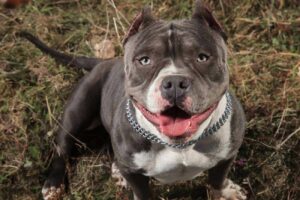Scottish Terriers are independent little warriors with a strong personality and high levels of energy. An excellent addition to a safety-focused family and a great choice for solitary individuals, Scottish Terriers are known to be almost entirely hypoallergenic.
A Scottish Terrier has a medium-density coat, sheds very little dander but requires a good bit of grooming. With good care, Scotties develop a sleek, almost bouncy coat.
Here's what to know about the fearless Scottish and why they are one of the best hypoallergenic dog breeds for people with pet allergies.
Why are Scottish Terriers Hypoallergenic?
Scottish Terriers are a blend of the Scot and Highland Terrier dog breeds: both of these share the best characteristics of the almost completely hypoallergenic Scottish Terrier.
Short and medium-haired dogs are more hypoallergenic than others.
Here’s what makes the Scottie the perfect hypoallergenic dog breed.
Their Coat
Scottish Terriers have a medium-haired, sleek coat.
Like people with darker hair, a Scot Terrier is less likely to shed their coat all over the place – and dirt or dust that make allergies worse won’t stick to their hair.
Their Skin
Dog allergies isn’t just about fur, but also about fine particulates (like shed skin) that trigger owner allergies.
Scottish Terriers with good care will have moisturized skin that won’t throw off as much allergy-causing particles around the home.
Their Coat’s Thickness
Scottish Terriers have a medium coat, not as thick as some other breeds (e.g. the Saint Bernard).
A thinner coat gives the Scottish Terrier the advantage of hair that is less likely to trap allergens, and easier to keep sleek and clean.
Their Sweat Glands
A Scottish Terrier produces less sweat through their glands compared to other dogs breeds that can be described as more allergenic.
Even in warm weather, Scottish Terriers produce less allergy-causing compounds through their skin than other dog breeds.
How to Minimize Allergies Caused By Scottish Terrier
All dogs have the potential to trigger an allergic reaction (that is, an immune response) in their owners or sensitive people. Hypoallergenic dogs like the Scottish Terrier, The Poodle or the Brussel Griffon are just much, much less likely to trigger these allergies thanks to several combined factors.
If you have a hypoallergenic dog breed like the Scottish Terrier (and you or someone in the household is sensitive to dogs), there are still things you can do to ensure less allergy problems with your pet in the house.
Here’s how to make sure your Scottish Terrier is as close to allergy-free as they can be.
Grooming
According to Denise Honeycutt, a Scottish Terrier dog breeder and owner of Denise's Tar Heel Terriers :
Scotties are rugged-looking dogs, with a wirey outercoat supplemented by a soft, thick undercoat. The undercoat keeps them warm, while the outercoat helps protect them from the elements. They do not shed, but do require grooming. The coat should be trimmed to give the distinctive Scottish Terrier look.
The average Scottish Terrier breed needs regular grooming: imagine it on the same schedule as brushing out your own hair!
Groom your Scottie often and like clockwork, at least once every 2 to 3 days. Grooming means a gentle brush through their fur, usually with a soft-bristle brush that has been made to suit their coat.
Regular brushing gets rid of potentially trapped fur, and keeps the amount of hair they can shed in your immediate environment less.
If you show a sudden allergic reaction to your Scot Terrier, start with a brushing of their fur.
Bathing
A Scottish Terrier should have a good bath with specific shampoo at least once every two weeks. Without proper grooming this could lead to doggy smell or an unpleasant odor.
Schedule their bath-time more often if they get into a mess, or if you live in an area with a lot of dust and other allergens in the air. Terriers in warmer climates will mean that you have to follow the same rule, and give them a bath more often.
Use a breed-specific shampoo to bring out the best attributes of the Scottish Terrier’s coat and a non-slip mat when bathing your dog at home. Make sure you rinse them well to avoid irritation from shampoo residue.
A regular bath clears the skin of potential allergens, and brings the shine back to their fur.
If you notice a sudden allergic reaction to your pet, it could be time to adapt your Terrier’s routine to more often. Be careful, though: overbathing can also make allergy-causing skin conditions more likely!
Diet
The wellness of your Scot Terrier’s coat isn’t just about the grooming routine.
A good, healthy and hypoallergenic coat also has a lot to do with the quality of their food. Mix a good Omega 3-rich dog food with a decent supplement to ensure your Terrier gets everything they need.
An enriched coat is less likely to cause dry hair that breaks off and sheds, triggering allergies.
The truth is that most pets, including your Scottish Terrier, could use a premium supplement mixed with the best food you can find.
Excellent dog food guarantees a hypoallergenic coat that stays in good condition.
Obesity can affect the small-bodied Scottie Terrier which leads to weak joints, back pain and arthritis so manage its weight wisely using diet and exercise.
Make Your Bedroom a Dog-Free Room
It’s an unfortunate truth that some people are just more sensitive to allergy-causing things than others.
Even though Scottish Terriers are hypoallergenic, they can still trigger allergies in sensitive owners and visitors. If you are especially sensitive to your Scottish Terrier’s fur and coat, make your bedroom a dog-free room.
Allergens are most likely to get under your skin in the bedroom. Fur and dander trapped in mattresses, carpets, curtains and sheets can stick even if you regularly rinse your pet.
Restrict bedroom access by giving your Scottish Terrier their own special nook outside the bedroom. Pick an area of the house that is easier for allergy-control, and keep this as their special play area.
Have Tile or Hardwood
Cloth and fabric can act like a filter for allergens. Unfortunately, heavy carpets trap allergens in the fine fibers of the carpet.
Even if you have given your Scottish Terrier a fresh bath, potential allergens like dust and fine hair can remain trapped in curtains and carpets.
If you have taken all the suggested precautions in this article (and you still have a sensitive or allergic reaction to your pet), change your carpets out for clean tile or hardwood floors.
Hardwood and tiles can just be wiped, and don’t require as much work (or trap as many allergens) as carpets would have.
Clean Your Home Frequently and Use a HEPA Filter
The best thing you can do against allergies if you are sensitive to common allergens (like hair and fur) is to clean your home frequently.
When your dog has just had a fresh bath, remember that your home and the rest of the environment hasn’t. Their fur and skin won’t trap allergies, but curtains, carpets and the air will still contain some.
Launder curtains at least once a month with a Scottish Terrier in the house. Wash carpets, especially loose carpets, on the same schedule.
Use a HEPA filter in the home. Common and affordable, these help to clean out the air. HEPA filers also remove the rest of the potential particles that could trigger your allergies from the environment.




